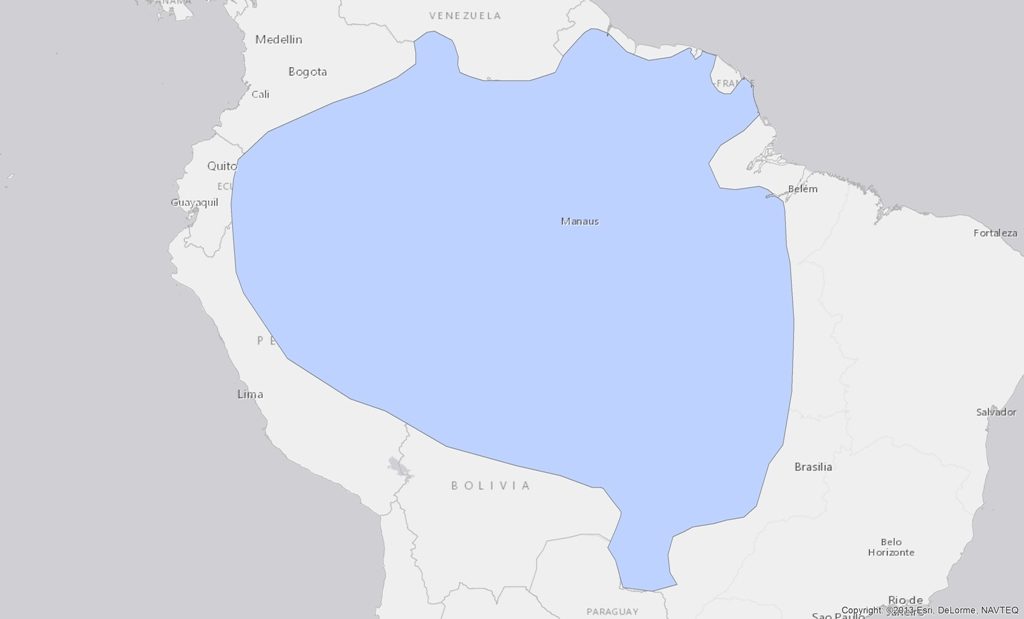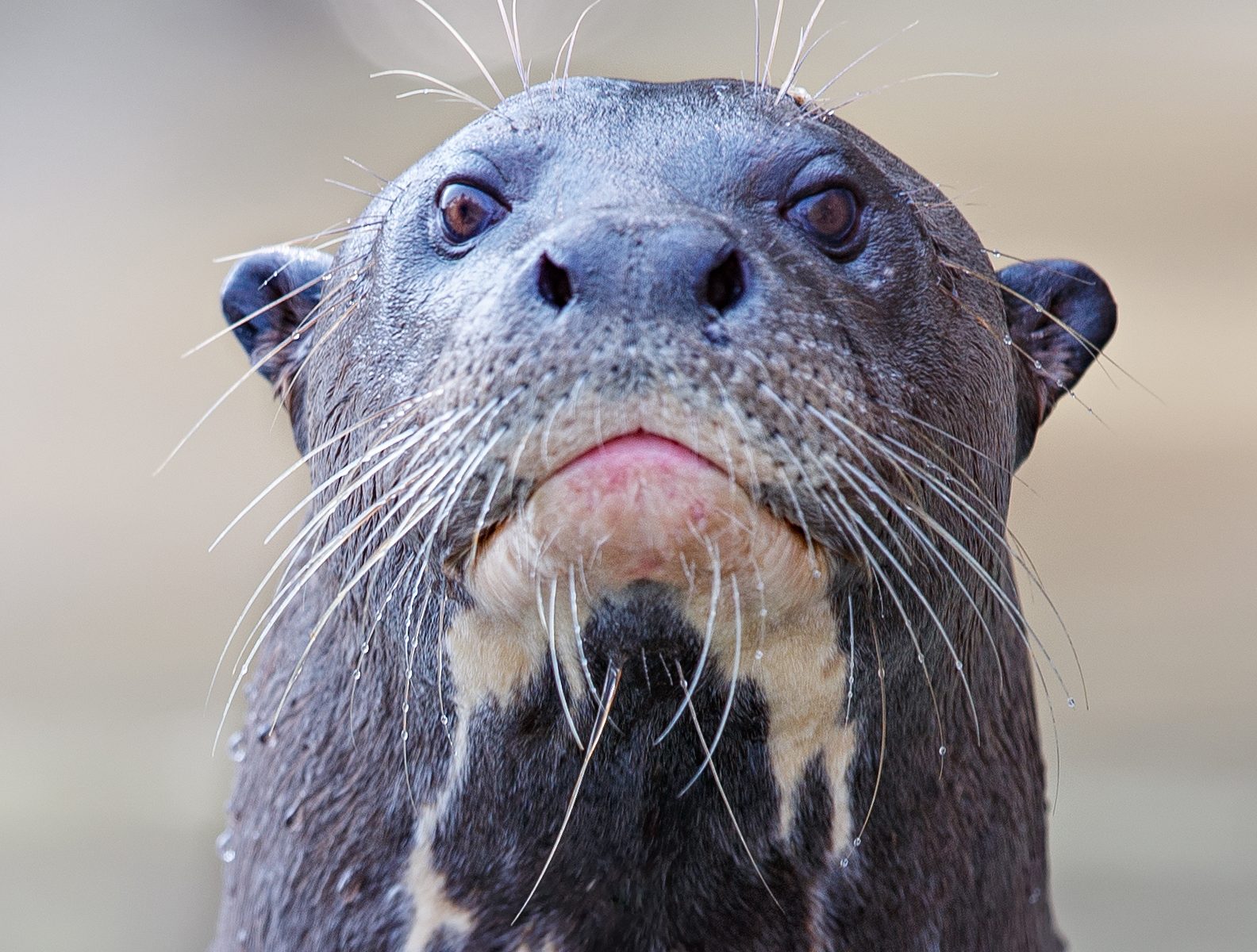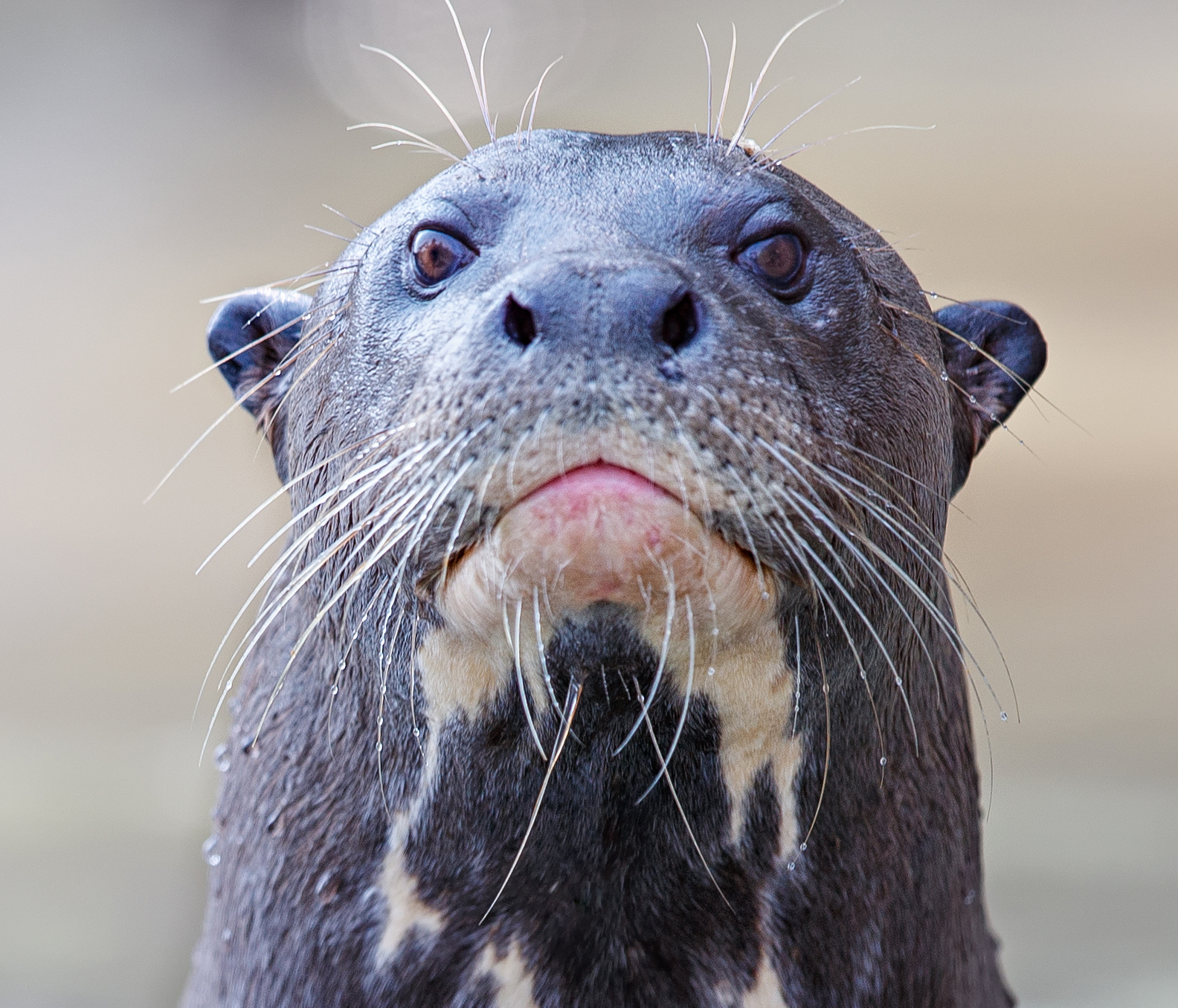alias: ariranha, river wolf, water dog
predators: big cats, caimans
threats: pollution, poaching, habitat loss, persecution
size: 145-180 cm (body 96-123 cm; tail 45-65 cm) weight: 24-34 kg

The largest extant otter species in the world is the giant otter from South America. Nearly hunted to extinction, it can reach up to 170 cm in length and lives in large, social family groups that sleep, play and hunt together. Typically, a monogamous pair that mates for life is at the head of the group composed of their offspring. They are vocal and territorial and although they will actively defend their home from intruders, some instances of acceptance of new, unrelated individuals to the group have been recorded. Being diurnal, noisy and living in groups, the giant otter is relatively easy to see in areas in which it is protected and is very popular with ecotourists. Its latin name, Pteronura, refers to its flat, winglike (ptero) tail (nura), which is one of the giant otter’s distinctive features, along with the markings on its neck that are used to identify individuals.
Download the IUCN Red List Fact Sheet




